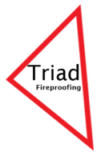Understanding intumescent coatings
Intumescent coatings are a specialized type of passive fire protection that play a crucial role in safeguarding buildings and exposed structures from the devastating effects of fire. These coatings are designed to swell and char when exposed to high temperatures, forming an insulating barrier that helps to protect the underlying materials from the intense heat of a fire. This blog will delve into the specifics of intumescent coatings, their applications, benefits, and how they contribute to fire safety.
wHAT ARE INTUMESCENT COATINGS?
Intumescent coatings are a form of fire-retardant paint that expands significantly when exposed to high heat. Upon reaching temperatures of around 200°C to 250°C, the coating undergoes a chemical reaction that causes it to expand and form a thick, protective char layer. This layer acts as a thermal barrier, insulating the substrate from the fire and delaying the structural damage.
How do Intumescent Coatings work?
The effectiveness of intumescent coatings lies in their ability to expand and create an insulating barrier. When exposed to heat, the coating swells and thickens, increasing its volume up to 100 times its original thickness.
This process involves several key stages:
1. Activation: At high temperatures, the coating’s chemical components react, releasing gases and causing the material to expand.
2. Expansion: The coating forms a foamy, charred layer that insulates the substrate.
3. Insulation: This char layer protects the underlying material by reducing heat transfer and preventing the substrate from reaching critical temperatures that could lead to structural failure.
The Chemical reaction is typically divided into three phases:
Dehydration: Water molecules in the coating evaporate, causing the initial swelling.
Decomposition: Organic materials in the coating decompose, releasing gases and further expanding the material.
Carbonization: A stable char layer is formed, providing a protective barrier that insulates the substrate.
Types of Intumescent coatings
Intumescent coatings can be broadly categorized into two types: thin-film and thick-film coatings.
⚫ Thin-Film Intumescent Coatings: Typically used in commercial buildings and residential structures, these coatings are applied in thin layers and are ideal for areas where aesthetics are important. They can be applied to steel, wood, and other construction materials.
⚫ Thick-Film Intumescent Coatings: These coatings are more robust and are commonly used in industrial settings, such as petrochemical plants and offshore oil rigs. They provide a higher level of protection and are suited for environments where the risk of fire is greater and more severe.
Applications of Intumescent Coatings
Intumescent coatings are used in a variety of settings to enhance fire resistance. Some common applications include:
⚫Steel Structures: Protecting steel beams, columns, and other structural elements in buildings. Steel loses its structural integrity at high temperatures, and intumescent coatings can significantly delay this process, allowing more time for evacuation and firefighting efforts.
⚫Wooden Surfaces: Used in both residential and commercial buildings to enhance the fire resistance of wooden components. Wood can be highly flammable, and intumescent coatings provide a protective barrier that can prevent ignition or slow down the spread of fire.
Benefits of Intumescent Coatings
The use of intumescent coatings offers numerous benefits, including:
Compliance: Helps buildings meet fire safety regulations and standards. Intumescent coatings are often required by building codes and insurance policies to ensure adequate fire protection.
Enhanced Fire Safety: Provides critical fire protection by delaying structural damage and collapse, allowing more time for safe evacuation and firefighting efforts.
Versatility: Can be applied to a wide range of materials, including steel, wood, and concrete, making them suitable for various construction and industrial applications.
Aesthetic Flexibility: Available in various finishes and colors, allowing for both protective and aesthetic applications. This is particularly important in commercial and residential buildings where visual appeal is a consideration.
Why Choose Intumescent Coatings?
Choosing intumescent coatings for fire protection is a proactive measure that can save lives and property. These coatings provide an additional layer of security, ensuring that buildings can withstand fire for longer periods, allowing for safe evacuation and reducing the risk of catastrophic damage.
Here are some key reasons to choose intumescent coatings:
Long-Term Protection: Intumescent coatings offer long-lasting protection, making them a cost-effective solution for fire safety. Once applied, they require minimal maintenance and can last for many years.
Eco-Friendly Options: Many modern intumescent coatings are designed to be environmentally friendly, with low levels of volatile organic compounds (VOCs) and non-toxic ingredients.
Improved Structural Integrity: By delaying the effects of fire on structural materials, intumescent coatings help maintain the integrity of buildings and structures during a fire, reducing the risk of collapse.
Peace of Mind: Knowing that your building is protected by intumescent coatings can provide peace of mind for building owners, occupants, and stakeholders, ensuring that fire safety measures are in place.
Intumescent coatings are a vital component in modern fire protection strategies. Their ability to expand and insulate makes them an effective solution for enhancing the fire resistance of various structures and materials. By investing in intumescent coatings, it can significantly improve fire safety and save lives from the devastating effects of fire.
In conclusion, intumescent coatings are not just an additional layer of paint, but a crucial protective measure that can make a significant difference in the event of a fire. They offer a practical and efficient way to enhance fire safety, ensuring that buildings and structures are better equipped to withstand the dangers of fire.
